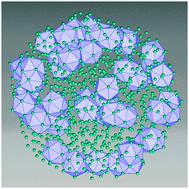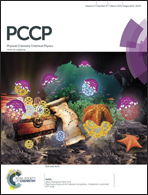Amorphization and thermal stability of aluminum-based nanoparticles prepared from the rapid cooling of nanodroplets: effect of iron addition
Abstract
Despite an intensive investigation on bimetallic nanoparticles, little attention has been paid to their amorphization in the past few decades. The study of amorphization on a nanoscale is of considerable significance for the preparation of amorphous nanoparticles and bulk metallic glass. Herein, we pursue the amorphization process of Al-based nanoparticles with classic molecular dynamics simulations and local structural analysis techniques. By a comparative study of the amorphization of pure Al and Fe-doped Al-based nanodroplets in the course of rapid cooling, we find that Fe addition plays a very important role in the vitrification of Al-based nanodroplets. Owing to the subsurface segregated Fe atoms with their nearest neighbors tending to form relatively stable icosahedral (ICO) clusters, the Fe-centred cluster network near the surface effectively suppresses the crystallization of droplets from surface nucleation and growth as the concentration of Fe attains a certain value. The glass formation ability of nanodroplets is suggested to be enhanced by the high intrinsic inner pressure as a result of small size and surface tension, combined with the dopant-inhibited surface nucleation. In addition, the effect of the size and the added concentration of nanoparticles on amorphization and the thermal stability of the amorphous nanoparticles are discussed. Our findings reveal the amorphization mechanism in Fe-doped Al-based nanoparticles and provide a theoretical guidance for the design of amorphous materials.


 Please wait while we load your content...
Please wait while we load your content...